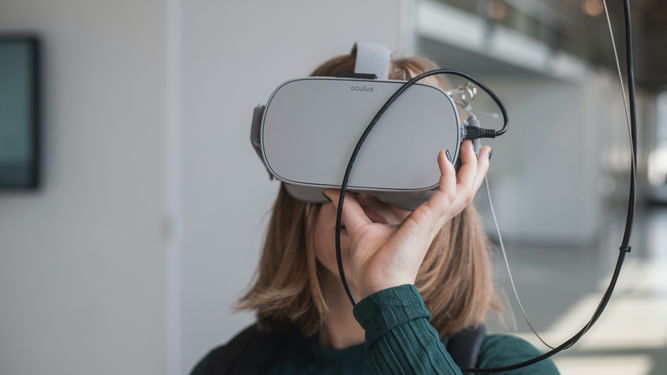Strategy
Digital marketing framework for collaboration
05/11/22
At Nordic Morning, we don’t just create great things. We help our clients to become great, using a holistic approach to assess and meet their needs. But what does that mean in practice? Find out as we share our collaborative digital marketing project framework, plus some top tips for success!
The digital marketing landscape is incredibly competitive. It can be tough to stand out, and even harder to thrive. At Nordic Morning, we aim to do more than just make great things for our clients – we want to help our clients become great. To always be evolving, improving and growing. We’re not just about delivering and moving on – we’re in it for the long haul.
But what does that mean for our day-to-day work? We’ve talked before about the challenges and solutions for marketing managers – but let’s take a step back from the activities themselves. How do we make sure long-term client success remains the focus at every stage of our digital marketing projects – from new incoming opportunities to building stronger ongoing relationships with our clients? We need to be strategic – both in how we assess and consider our clients' needs, now and moving forward into the future, and in how we plan our projects.
This is why we’ve developed our very own methodology for the planning and managing of our digital marketing projects – an inclusive approach that takes full advantage of the wide spectrum of expertise and creative ideas we have on hand as a full-service agency.
Building a digital marketing framework for collaboration and success
When dealing with a new incoming request or business opportunity, the most common response is to approach the request very tactically, directing it straight to the most relevant person or team for that particular request and having them suggest a solution in the form of a project proposal or pitch.
While this approach does work (after all, they are technically giving the client what they asked for, and getting paid for their work), it’s also a missed opportunity. Firstly, because most clients aren’t experts in digital marketing – which is exactly why they’ve come to us. They might have asked for one thing, but in fact, the goal or problem they want to address could be achieved in several different ways – some better than others.
Secondly, however experienced or talented a person or individual team is, they will still tend to focus on their own skill set and field – and therefore think of how the client's needs within that area can be met. It’s only natural - like in Maslow’s Law of the Instrument, we will always be biased toward the instruments we’re familiar with – or, if the only tool you have is a hammer, everything looks like a nail.
At Nordic Morning, we want to avoid limitations, taking a more strategic approach and considering a range of ideas and find the best way to achieve our client’s goals and help them grow. To do this, we’ve built an approach which centers around “bouncing” every idea and opportunity off as many different people (and disciplines) as possible, structured within a clear framework that is broken down into five steps.

Step 1 – Identify the opportunity
This is the stage where an opportunity first presents itself – and what kicks the whole process off. This could be anything from receiving a formal request for a pitch or proposal to an informal conversation or question from a client, or a currently unmet need identified by an account manager or team member currently working on a project.
Step 2 – Conduct a pre-assessment
This is where you will gather all the necessary information to ensure you understand the opportunity, its context and background as well as possible constraints. This information is vital, as it’s what will enable you to think about the client's needs from a broader perspective than just the deliverable(s) they are asking for.
We use a simple questionnaire to establish all the relevant facts, from the history with the client, through what they are asking for and their expectations, any briefs or requirements to any constraints they might have. Is there a budget, or a deadline? We consider what business problems they may be facing, what goals they are trying to achieve and how they are currently working. By the end of this step we have quite a good map of the history, expectation, context and constraints behind the opportunity.

Step 3 – Hold a “pinball” meeting (and fill out a project canvas)
This is where the real magic happens. Gather a multidisciplinary group with as many different perspectives as possible in a round-table meeting to discuss the opportunity and the various ways it could be handled. For us, this means bringing together representatives from the account and all our different offering areas. They will then go over the opportunity and bounce it off one another, all providing input which will help decide on the best way to approach it. This stage has lent our framework the name we use in-house – the “pinball methodology”.
This doesn’t just ensure you have a range of perspectives involved and more creative ideas generated – it also means we’re learning about what’s possible from the different offering areas as we’re brainstorming. We can’t (and shouldn’t) all be experts in every field, so learning what the other teams or individuals within your company can provide can be enormously helpful for your future collaborations and identifying new opportunities.

Even when a project seems quite straightforward, such as a content production request, or a website build, these broader insights could provide crucial suggestions for future optimization and growth – perhaps through analytics and performance measurement, SEO optimization or more strategic guidance.
In the pinball meeting, we fill out a matrix called a project canvas together, where we ask more questions and map a holistic picture of the project. Factors might include how we can help them, any potential future continuation identified, what we love about the project and the benefits the project or relationship could bring, both for the client and us. We’re trying to build a long-term partnership, so it’s important to think about if this project and client are a good match for us and if there’s something about them that makes us excited or inspired, as well as how we can help them fulfill their purpose and become great, as mentioned earlier.
Step 4 – Rebrief the client and advise a course of action for your project
With all the insights from the project canvas, the account manager or client contact is now well-informed and prepared, and can return to the client and re-brief them on the project plan, presenting the insights and making it clear how well we understand their situation and business – and how best we can help.
Even if they choose not to take on any additional expansions or continuations beyond the scope of the original request, they still now have a clear path ahead for how they can improve and grow in the future, and we’ve shown that we have a strong foundation and plan for a close, insight-driven and data-based working relationship already in the works – supporting their every need, whenever they’re ready for the next step.
Step 5 – Assemble your dream digital marketing project team
Next, you can identify the ideal team that is best equipped to reach all the goals outlined in the project canvas. Make sure all team members are familiar with the project canvas before they get started, as it will keep everyone aligned and on the same page with the project plan and their role in the group.
Remember that this method shouldn't be a one-off process that you do at the beginning and then forget about. Come back to your project canvas regularly and refresh yourself on those ideas. Even if you did get the initial project off the ground, the scope of it may have ended up being quite specific. It’s always worth coming back to it together with the client later, and perhaps you can pick back up any other ideas that weren't able to be done within the original scope.
Three top tips for better digital marketing projects
Finally, we’ll leave you with some tips for using this methodology yourself, either for a more holistic approach to digital marketing projects or for better creative idea generation for your business.
1) Structure your collaborative sessions and practice until perfect
Whether you use this framework and the project canvas or develop your own, it’s really helpful to have some sort of structure in place for collaborative brainstorming sessions. It gives you a clear and set way of going about things. In a fully open collaborative discussion, it can be hard for some people to understand what you’re doing and what you’re trying to solve. It’s great to have a formalized framework to keep you focused. It may take a few sessions to get it right – don’t despair, make any changes needed to the framework as you go, and try again.
2) Really become a group – listen and be open
Make sure everyone is open and ready to listen to different perspectives. You need to be a collaborative group. Actively listen and bounce off one another. Create a safe space, where nobody is afraid to speak up and contribute. Be very clear from the start – there are no stupid ideas! The silliest idea may not be the solution to the problem, but it could just be the trigger for other great ideas that come up as a result.
3) Tailor the framework to fit your needs
We hope you’ll find something useful in this methodology – even if you only leave with some inspiration. Don’t get too tied up in the structure itself. Having questions to answer can be a very useful tool to give you something to lean on, but you can always change things to suit your needs. Take and use whichever elements that you like, try them out and see what works best for you!
Good luck and happy pinballing!
Want to find out more about our full-service digital marketing offering? Contact us.
Or, learn more about what it’s like to work with us in our blog post on what to expect in the first 30 days from Nordic Morning.



